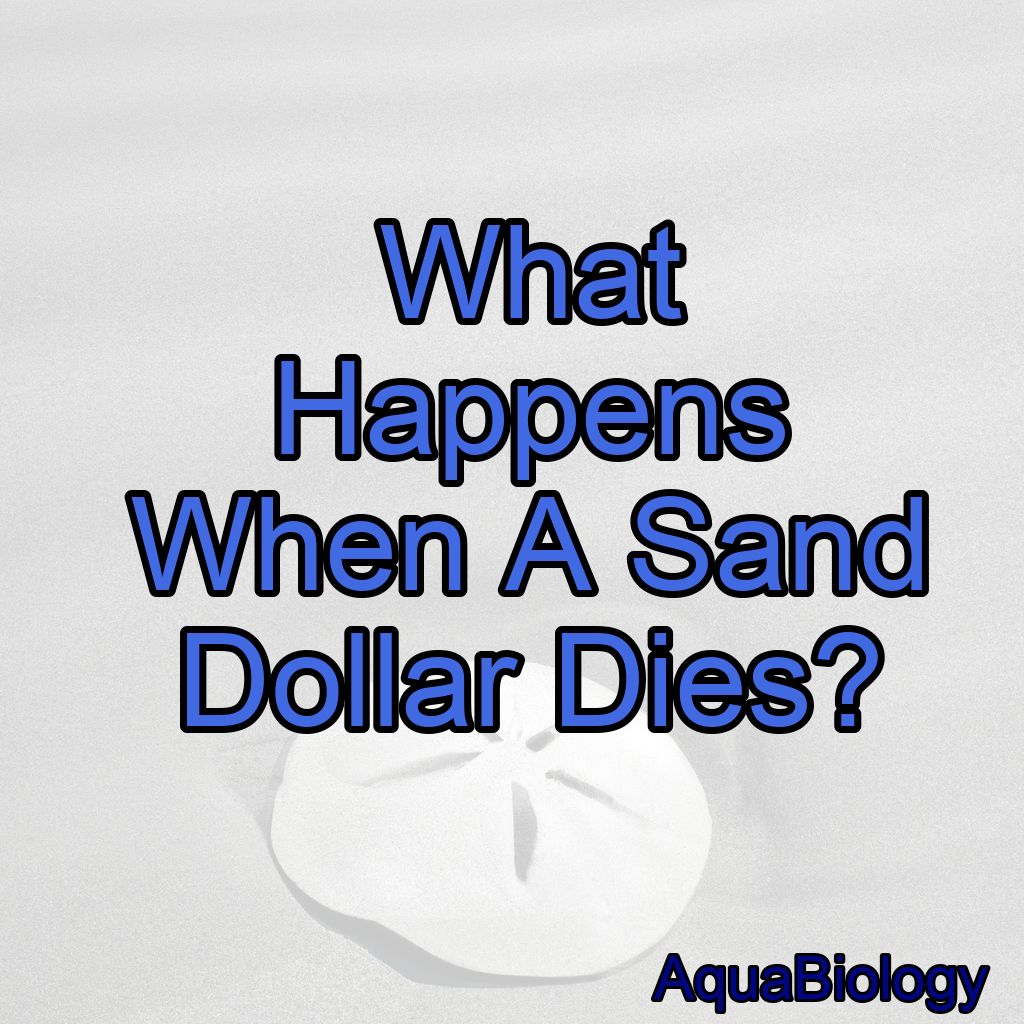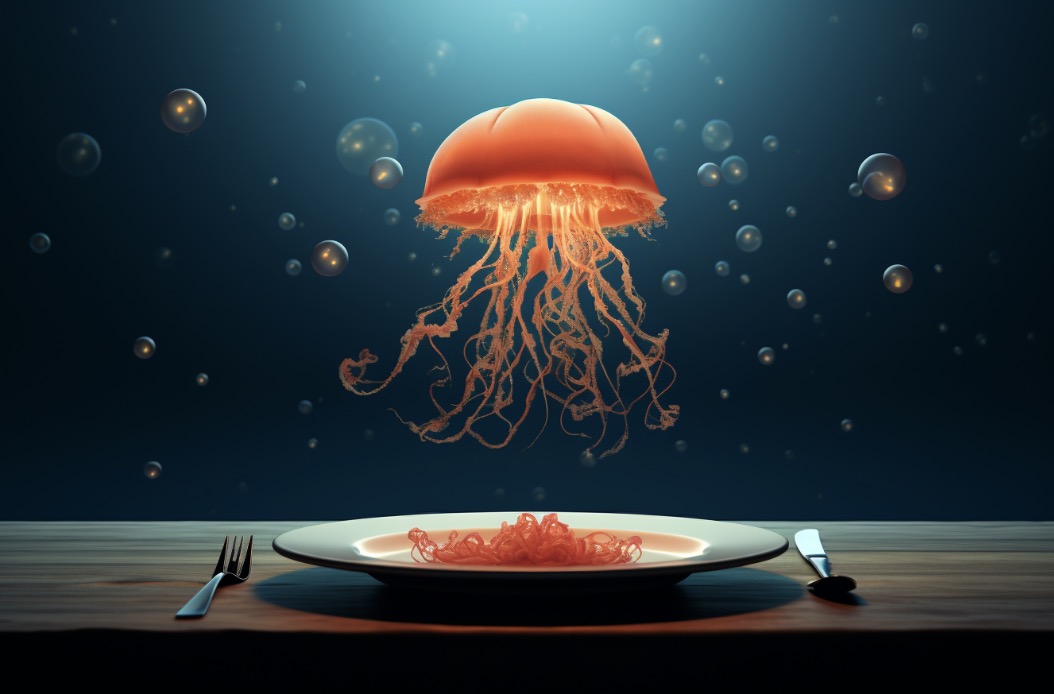As a marine biologist, I have always been fascinated by the intricate and delicate beauty of sand dollars. These flattened, circular echinoderms are found in abundance on sandy beaches and are a common sight for anyone who spends time near the ocean.
When a sand dollar dies, its body decomposes, leaving behind its skeleton, known as a test, which often washes ashore.
But have you ever wondered what happens when a sand dollar dies? In this blog post, I will explore this topic in detail, drawing on my personal experience and scientific knowledge to provide a comprehensive answer.
The Anatomy of a Sand Dollar
Before we dive into the process of what happens when a sand dollar dies, it is important to understand the anatomy of these creatures.
Sand dollars belong to the class Echinoidea, which includes sea urchins and heart urchins.
They have a flattened, disk-shaped body with a hard exoskeleton made up of tiny plates called ossicles.
The top of the exoskeleton has a distinctive pattern of five petal-like structures, which are actually the sand dollar’s feeding apparatus.
These structures are covered in tiny spines that help the sand dollar move and burrow in the sand.
Inside the exoskeleton, sand dollars have a complex system of organs, including a water vascular system that helps them move and feed. They also have a mouth and digestive system, as well as a reproductive system that allows them to reproduce sexually.
The Death of a Sand Dollar
Like all living organisms, sand dollars eventually die.
When a sand dollar dies, its body begins to break down and decompose.
In the early stages of decomposition, the sand dollar’s body may appear intact and whole, but over time, it will start to break apart and disintegrate.
One of the first things to happen when a sand dollar dies is that its spines fall off.
These spines are actually separate structures that are attached to the ossicles of the exoskeleton.
When the sand dollar dies, the spines lose their connection to the ossicles and fall away.
As the sand dollar’s body decomposes, the exoskeleton will also start to break down.
This process is accelerated by the fact that the exoskeleton is made up of tiny plates that are held together by ligaments and muscles.
When the sand dollar dies, these ligaments and muscles relax, causing the plates to separate and the exoskeleton to break apart.

The Role of Bacteria in Decomposition
Like all dead organisms, sand dollars are eventually broken down by bacteria.
Bacteria play a vital role in the process of decomposition, breaking down the sand dollar’s tissues and releasing nutrients back into the ecosystem.
This process is essential for the health of the ecosystem, as it helps to recycle nutrients and keep the food chain functioning properly.
However, the decomposition of a sand dollar can also have negative impacts on the ecosystem. As the sand dollar’s body breaks down, it releases nutrients and organic matter into the water, which can lead to an increase in algae blooms and other forms of harmful algal blooms.
These blooms can have major impacts on the health of the ecosystem, leading to oxygen depletion and the death of fish and other marine life.
The Fate of a Dead Sand Dollar
When a sand dollar dies, its body will eventually break down and disintegrate, leaving behind only the exoskeleton. This exoskeleton can persist in the environment for a long time, depending on a variety of factors such as water conditions and the presence of predators.
Over time, the exoskeleton will start to become covered in algae and other forms of marine life.
This process is known as biofouling and is a natural part of the ecosystem.
The exoskeleton may also become a home for other marine organisms, such as small crabs and snails, which use the exoskeleton for shelter and protection.
#
Conclusion
In conclusion, when a sand dollar dies, its body will eventually break down and decompose, leaving behind only the exoskeleton. This exoskeleton can persist in the environment for a long time and may become covered in algae and other forms of marine life.
Decomposition is an essential process in the ecosystem, as it helps to recycle nutrients and keep the food chain functioning properly. However, the decomposition of a sand dollar can also have negative impacts on the ecosystem, leading to an increase in harmful algal blooms.
Here are 5 key takeaways to remember about what happens when a sand dollar dies:
1. Sand dollars have a complex anatomy, including a hard exoskeleton and a system of organs.
2. When a sand dollar dies, its spines fall off and its exoskeleton begins to break down.
3. Bacteria play a vital role in the process of decomposition, breaking down the sand dollar’s tissues and releasing nutrients back into the ecosystem.
4. The decomposition of a sand dollar can have both positive and negative impacts on the ecosystem.
5. The exoskeleton of a dead sand dollar can persist in the environment for a long time and may become covered in algae and other forms of marine life.
FAQs
What is inside a dead sand dollar?
A dead sand dollar is typically filled with a powdery substance made up of the animal’s dried out internal organs and skeletal remains.
How long after a sand dollar dies does it turn white?
Sand dollars turn white shortly after they die, usually within a few hours to a few days.
What are the hard white pieces inside a sand dollar test?
The hard white pieces inside a sand dollar test are called ossicles and they are part of the sand dollar’s endoskeleton, which provides support and protection for the animal’s internal organs.
What is inside a sand dollar when you break it open?
When you break open a sand dollar, you will find five white, chalky, and triangular-shaped structures called “doves,” which are actually the sand dollar’s teeth.
Is it rare to find a sand dollar?
No, it is not rare to find a sand dollar on some beaches, but it depends on the location and time of year.
How much is a dead sand dollar worth? A dead sand dollar has no commercial value.
It is illegal to collect live sand dollars in many areas, so it is important to check local regulations before picking them up.




